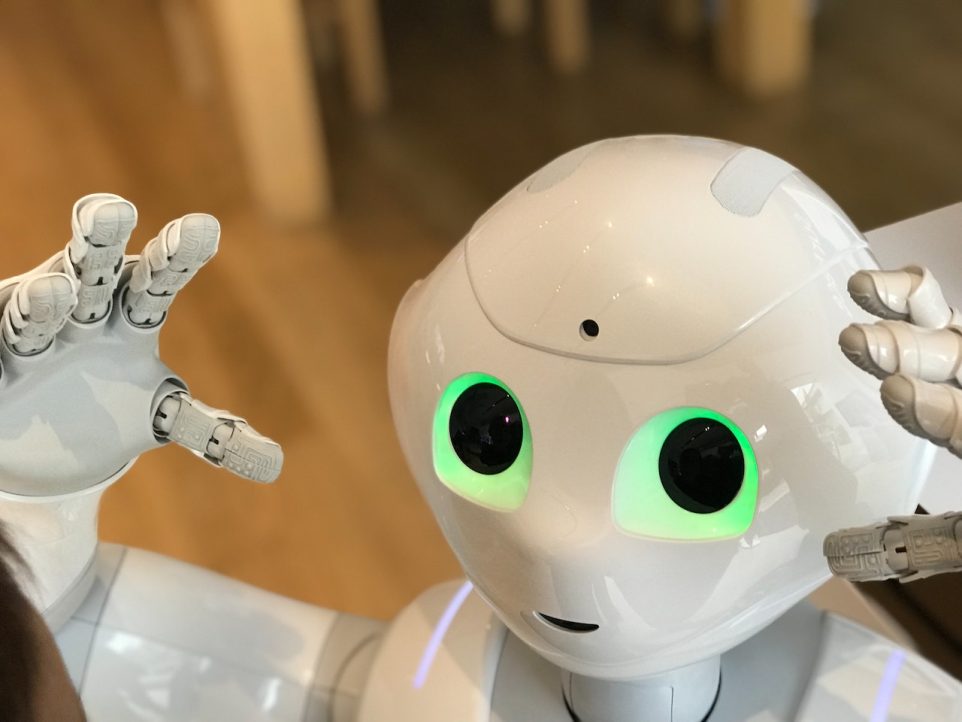Nostalgia concludes that the good ol’ days were superior in almost every measurable way. The cars were cooler, the clothes were more fashionable, and school taught you more than it teaches you today. Well, the first two are debatable, but the third appears to be statistically untrue. Kids today are learning at least as much as, if not more than, kids from previous generations, and much of that can be attributed to modern teaching techniques and superior technology. But now that kids can use artificial intelligence (AI) programs to write essays for them, have we gone too far?
 Yes, AI Can Do This, That, and the Other Thing
Yes, AI Can Do This, That, and the Other Thing
With a few clicks, a valid email address, and a mobile phone number, anyone with an internet connection can access the AI cheat code that is ChatGPT. ChatGPT describes itself as an AI language model and encourages users to ask it anything by typing words into the message field. There is no topic too esoteric or obscure for ChatGPT—seriously, ask it absolutely anything! Even if u spll lyk dis, it can understand your meaning.
Naturally, students all over the world have been experimenting with this AI in education contexts and making some remarkable discoveries. We at Tutoring…With a Twist* wanted to see just how powerful ChatGPT is, so we put it to the test by asking it to do a wide variety of tasks within each of the four main subjects in school. The results—astonishing, to say the least!—are below.
English and Social Studies
Being a language model, ChatGPT’s most obvious application is in the realm of reading and writing. After rigorous testing, we were shocked to discover just how profoundly proficient the AI is in this area.
We asked ChatGPT to write incredibly specific essays in a variety of styles, and it gave us perfectly serviceable essays in a matter of seconds. We modified every imaginable parameter, including essay type, topic, word count (up to a maximum of 2048 characters), sentence length, and many more. ChatGPT even deigned to write a persuasive essay about how Mary Shelley’s Frankenstein foreshadowed the advent of AI, highlighting the potential dangers of AI turning against its creators.
The irony was completely lost on ChatGPT, however. When asked to write a creative short story featuring irony, it was incapable of doing so without using the word “irony” in the story itself. We asked it if writing an ironic story without using the word “irony” was difficult, and it admitted that, yes, the task was too difficult. The same goes for many other literary devices. It seems that AI still lacks the finesse of human authors, so we need not fear for the future of the publishing industry. At least not yet.
As far as AI in education is concerned, its true strength lies in generating thought-provoking work for students who wish to practice their skills. We asked ChatGPT to create an article about a topic of its choice and provide reading-comprehension questions to go alongside, and it happily obliged. We even specified the grade level, and it modified the article and questions accordingly.
ChatGPT also provides feedback on pieces of writing students have composed themselves. Students can simply copy and paste their own essays and stories into the message field and ask ChatGPT to critique them. According to popular writing conventions, the AI will offer suggestions to help improve clarity, conciseness, grammar, and more.
If you’re a student in need of a partner to help you study for your upcoming Social Studies exam, ChatGPT is your friend. We asked the AI to generate multiple practice questions spanning a variety of topics such as History and Geography, and it succeeded in providing a mixture of simple and complex questions. When we answered each question, ChatGPT assessed what we had said and clarified each concept for us. ChatGPT is not flawless in this area though; its developers caution that the AI might accidentally give false information at times, so be sure to double-check everything it tells you.
Math and Science
Many students use apps such as Photomath for help with their Math problems, especially if they involve diagrams. Simply take a photo of the problem and Photomath will solve it almost instantly. ChatGPT can’t process images, but it handles both Math and Science word problems masterfully. Simply type in any question exactly as it’s worded in a textbook or on a worksheet and watch the magic happen. It will give you the correct answer and explain all of the formulae and techniques it used along the way.
 If there is a particular step you don’t understand, you can ask ChatGPT to explain it to you in greater detail. However, this provides mixed results. When we tested it with high school Math problems, the AI sometimes struggled to explain certain steps in sufficient detail.
If there is a particular step you don’t understand, you can ask ChatGPT to explain it to you in greater detail. However, this provides mixed results. When we tested it with high school Math problems, the AI sometimes struggled to explain certain steps in sufficient detail.
ChatGPT can also generate unique Math and Science questions for students who wish to get a little extra practice before an upcoming test. We petitioned it to come up with Chemistry equilibrium problems that involve non-Chemistry activities such as track and field, ballet dancing, and automobile racing. In the latter example, it even provided a warning saying that automobile racing must be done in a safe, legal environment. Thanks, ChatGPT!
The AI will always try its best to facilitate Math and Science requests, but it sometimes falls prey to simple oversights a human would catch immediately. For example, we asked ChatGPT to generate a grade 10 Trigonometry problem involving ice hockey. The problem required us to calculate the height of a hockey net based on the angle at which a puck was shot toward it. We solved it and discovered that the net was 5.77 meters tall, or just shy of 19 feet! We informed the AI that the question was unrealistic, and it immediately corrected the values, creating a new question with NHL-standard numbers.
So, We’re Doomed?
It’s easy to view the situation with cynicism. Yes, students can now use AI in education settings to complete all of their assignments for them. Doing so will ensure that they learn almost nothing in the process, thus rendering school completely pointless. If this is the way you see it, we don’t blame you. But let’s at least try to examine our new reality with a degree of optimism.
Technological innovations have always been met with staunch opposition. The printing press, the compass, the telephone, and even the sewing machine were widely viewed with enmity for a number of reasons when first introduced. The primary fear was that these inventions would render certain skills unnecessary, therefore rendering certain people unnecessary.
We as humans have always adapted and effectively integrated technology into our lives regardless of the societal upheaval predicted by our forebears, even when that technology “threatened” the education of children. The invention of writing meant that students would develop faulty memories since they could write everything down instead of having to remember it. In 19th century schools, the transition from using slates, which had to be constantly erased, to using pencil and paper, which produced permanent notes that could be referred to in the future, meant that students would develop faulty memories since they could write everything down instead of having to remember it. The invention of the calculator meant…
The above arguments seem ridiculous now, but they highlight our inherent resistance to change. We never give ourselves enough credit for how adaptable we really are, especially when it comes to education. In reality, each new innovation has allowed educators to upgrade their curricula, taking students into deeper realms of understanding. For example, the existence of calculators means students can waste less classroom time performing tedious sums, differences, etc. and spend more time developing problem-solving and critical-thinking skills by engaging with difficult word problems. In this way, AI in education can be viewed as the next logical step in this progression.
The Seeming Impossibility of Adapting to AI in Education
AI is something we so little understand, and its sudden prevalence requires us to adjust more quickly than we’ve had to in the past. It’s a challenge we ought to welcome, though, considering the sheer potential with which models like ChatGPT provide us.
Presently, educators are struggling to adapt to AI in education. Since ChatGPT can generate decent essays about absolutely anything, and since those essays can’t be checked for plagiarism, English teachers can’t reasonably tell the difference between an essay written by a student and an essay written by AI. At the university level, ChatGPT essays don’t carry much weight. But in elementary and high school, ChatGPT essays tick most, if not all, of the necessary boxes.
 To circumvent this issue, some English teachers are only accepting writing assignments produced in the classroom, in a single classroom session, using paper and pencil. This means that students can’t use a computer or other device to conduct research, limiting their topics of discussion to things they already know. It also means that students must brainstorm ideas and throw together a coherent piece in about an hour with no opportunity to refine their points through iterative editing.
To circumvent this issue, some English teachers are only accepting writing assignments produced in the classroom, in a single classroom session, using paper and pencil. This means that students can’t use a computer or other device to conduct research, limiting their topics of discussion to things they already know. It also means that students must brainstorm ideas and throw together a coherent piece in about an hour with no opportunity to refine their points through iterative editing.
Ours must be a strange era if teachers are forbidding students from doing homework! Fortunately, there are organizations developing AI models to counter models like ChatGPT. Turnitin is an AI detection model that can tell if a piece of content has been produced by AI. This gives teachers the power to identify AI essays, which is great. But, in theory, it also gives students the power to tweak their AI essays so they can sneak through undetected.
Not all teachers are reacting to AI in education negatively. Some are encouraging students to use models like ChatGPT whenever they can, suggesting that the AI can function as a high-powered search engine that drastically reduces research time. They’re not wrong. ChatGPT allows for an unmatched level of specificity in queries, directing users toward relevant information in seconds. Gone are the days of trying to figure out the exact combination of words that will convince Google to show you what you want, not to mention sifting through all the irrelevant webpages to finally locate the single paragraph you were looking for all along.
Sticking with the “if you can’t beat ’em, join ’em” mentality, some education institutes are using AI models to automatically grade students’ work, and they have been for quite some time. These models produce mixed results, but as they become more and more advanced, they more closely resemble their human counterparts. Some rely only on finding keywords in students’ responses, and these can be easily exploited by flooding the response section with said keywords in no coherent order. Others use more complex systems such as neural networks to grade like professional educators, allowing the proper assessment of more nuanced responses.
What Do We Do Now?
AI might prove to be our downfall, but we’re certainly not there yet. As AI expert Oren Etzioni explains, ChatGPT and other AI models have “far more potential to enhance our abilities than to make us redundant.” Our own experiments with ChatGPT have made this clear. AI in education presents a treasure trove of opportunities for students and educators to elevate their learning and teaching experiences, so long as it is used responsibly.
No matter what, there will always exist people who choose to take the easy way out. Sneaking a cheat sheet into a test, asking a friend to write an essay, copying off a classmate—it’ll happen anyway, and AI won’t make it any worse. Kids will always find a way if that’s what they really want to do. But that in itself, that determination to find a way, is exactly what makes kids so special. And it is our duty as parents and educators to instill in kids the beauty of that determination, to teach them to take pride in their work and their accomplishments so they’re never tempted to take the easy way out in the first place.
This is our burden, and it always has been. We must bear it with honour. It has never been more important than now for us to recognize our responsibility as role models. It is imperative that we champion our kids and encourage them to use technological advancements like AI in ways that enhance their capacity for learning instead of undermining it. Those students in whom we spark a love of learning, those students who truly value their educational journey—those students will always take the honest path and use tools like ChatGPT in ways that promote their own development.
At Tutoring…With a Twist*, we invest in students’ success. Our twisted tutors forge deep, unique connections with every student to help them fall in love with learning. In this way, we can aid in the navigation of AI in education and how teachers are responding to it. For example, if your child’s teacher requires students to write essays during class time, we can work with your child to develop their own personalized methods to optimize that class time and produce high-quality writing therein.
If you would like to learn more about AI in education or have questions about our twisted tutoring services, we encourage you to contact us. Also, feel free to share your opinions in the comments below.
Stay up to date with all the new advancements in education by following us on Facebook and checking out our YouTube channel.
*Services provided by With a Twist Education Ltd.

